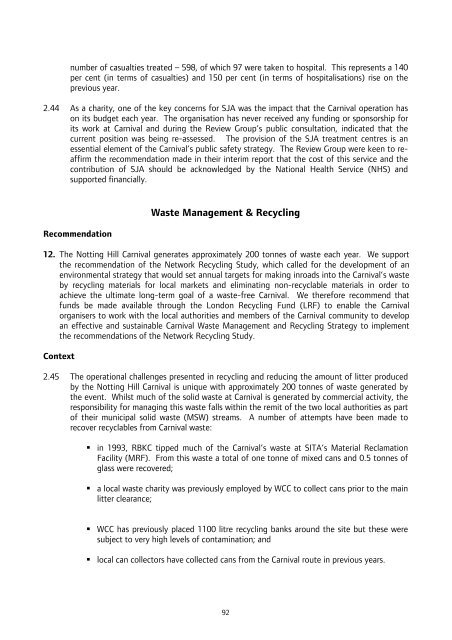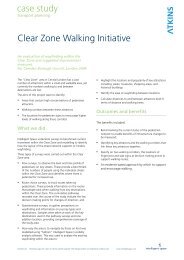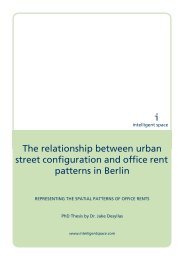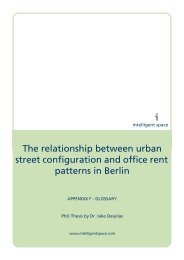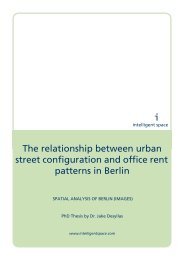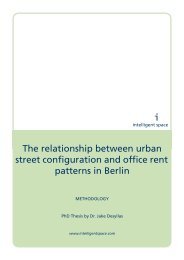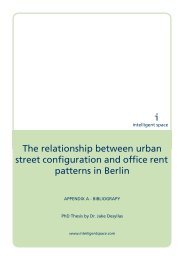Notting Hill Carnival Strategic Review - Intelligent Space
Notting Hill Carnival Strategic Review - Intelligent Space
Notting Hill Carnival Strategic Review - Intelligent Space
You also want an ePaper? Increase the reach of your titles
YUMPU automatically turns print PDFs into web optimized ePapers that Google loves.
number of casualties treated – 598, of which 97 were taken to hospital. This represents a 140<br />
per cent (in terms of casualties) and 150 per cent (in terms of hospitalisations) rise on the<br />
previous year.<br />
2.44 As a charity, one of the key concerns for SJA was the impact that the <strong>Carnival</strong> operation has<br />
on its budget each year. The organisation has never received any funding or sponsorship for<br />
its work at <strong>Carnival</strong> and during the <strong>Review</strong> Group’s public consultation, indicated that the<br />
current position was being re-assessed. The provision of the SJA treatment centres is an<br />
essential element of the <strong>Carnival</strong>’s public safety strategy. The <strong>Review</strong> Group were keen to reaffirm<br />
the recommendation made in their interim report that the cost of this service and the<br />
contribution of SJA should be acknowledged by the National Health Service (NHS) and<br />
supported financially.<br />
Recommendation<br />
Waste Management & Recycling<br />
12. The <strong>Notting</strong> <strong>Hill</strong> <strong>Carnival</strong> generates approximately 200 tonnes of waste each year. We support<br />
the recommendation of the Network Recycling Study, which called for the development of an<br />
environmental strategy that would set annual targets for making inroads into the <strong>Carnival</strong>’s waste<br />
by recycling materials for local markets and eliminating non-recyclable materials in order to<br />
achieve the ultimate long-term goal of a waste-free <strong>Carnival</strong>. We therefore recommend that<br />
funds be made available through the London Recycling Fund (LRF) to enable the <strong>Carnival</strong><br />
organisers to work with the local authorities and members of the <strong>Carnival</strong> community to develop<br />
an effective and sustainable <strong>Carnival</strong> Waste Management and Recycling Strategy to implement<br />
the recommendations of the Network Recycling Study.<br />
Context<br />
2.45 The operational challenges presented in recycling and reducing the amount of litter produced<br />
by the <strong>Notting</strong> <strong>Hill</strong> <strong>Carnival</strong> is unique with approximately 200 tonnes of waste generated by<br />
the event. Whilst much of the solid waste at <strong>Carnival</strong> is generated by commercial activity, the<br />
responsibility for managing this waste falls within the remit of the two local authorities as part<br />
of their municipal solid waste (MSW) streams. A number of attempts have been made to<br />
recover recyclables from <strong>Carnival</strong> waste:<br />
• in 1993, RBKC tipped much of the <strong>Carnival</strong>’s waste at SITA’s Material Reclamation<br />
Facility (MRF). From this waste a total of one tonne of mixed cans and 0.5 tonnes of<br />
glass were recovered;<br />
• a local waste charity was previously employed by WCC to collect cans prior to the main<br />
litter clearance;<br />
• WCC has previously placed 1100 litre recycling banks around the site but these were<br />
subject to very high levels of contamination; and<br />
• local can collectors have collected cans from the <strong>Carnival</strong> route in previous years.<br />
92


